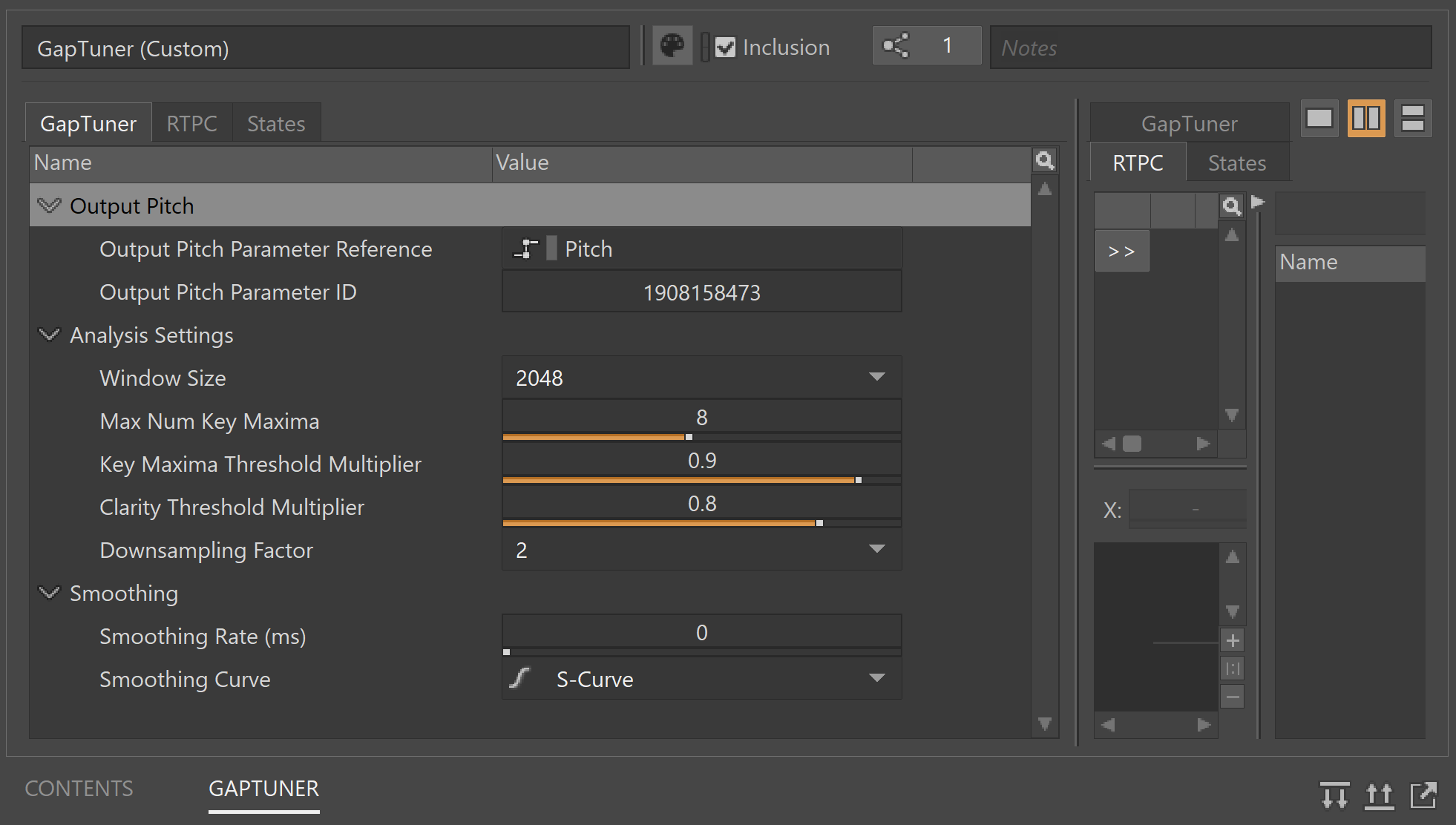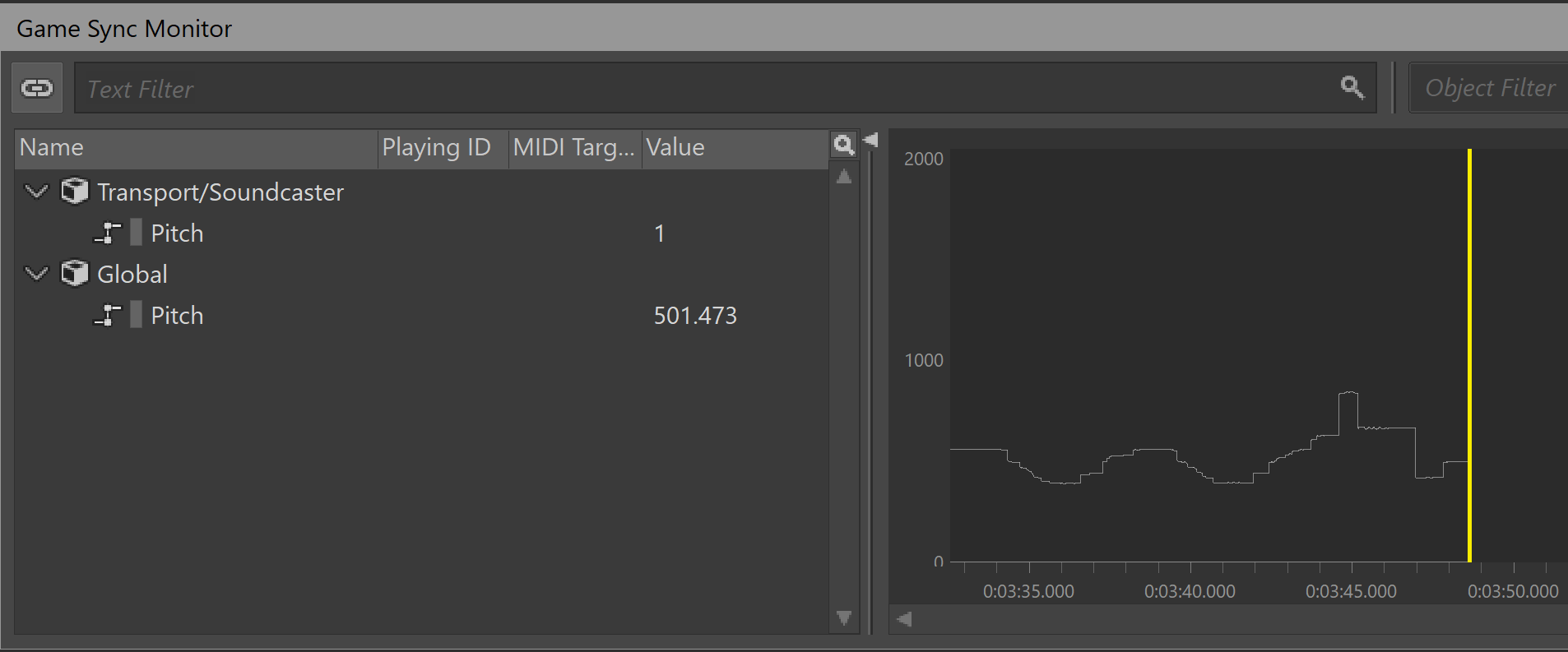GapTuner is a real-time monophonic pitch tracker implemented as a Wwise effect plugin.
The plugin's source code serves as accompaniment to Chapter 9 (Building a Pitch Tracker: Fundamentals) and Chapter 10 (Building a Pitch Tracker: Practical Techniques) of Game Audio Programming 4: Principles and Practices.
If you're interested in seeing some of these pitch tracking concepts in action, check out One Hand Clapping, a game in which the player sings into the microphone to solve musical puzzles!
Add a GapTuner instance in your effects chain and set the Output Pitch Parameter Reference to an RTPC of your choice. The RTPC value will now track the pitch of incoming audio to the plugin:
The plugin consists of three categories of parameters:
- Output Pitch
- Output Pitch Parameter Reference: A reference to the output pitch RTPC. This allows you to browse to a specific RTPC in your project within Wwise authoring.
- Output Pitch Parameter ID: The ID of the output pitch RTPC. This gets populated automatically when you set the Output Pitch Parameter Reference, but you can also set this manually if you'd like.
- Analysis Settings
- Window Size: The size (in samples) of the analysis window to use for pitch detection. Larger windows allow better detection of lower frequencies but incur more latency and CPU usage.
- Max Num Key Maxima: Maximum number of key maxima to consider during the peak picking process. Higher values allow for more accuracy but require slightly more CPU usage.
- Key Maxima Threshold Multiplier: Multiplier that determines the correlation threshold above which key maxima can be picked. Higher values bias towards higher octave errors, while lower values bias towards lower octave errors.
- Clarity Threshold Multiplier: Multiplier that determines the correlation threshold above which the pitch estimate has sufficient clarity. Higher values result in greater robustness to noise at the cost of reduced overall sensitivity.
- Downsampling Factor: Factor by which the window size gets downsampled prior to performing analysis. Higher values result in lower CPU usage at the cost of reduced accuracy and precision.
- Smoothing
- Smoothing Rate (ms): Interpolation rate for setting the output pitch parameter value. Higher values result in increased responsiveness at the cost of decreased smoothness.
- Smoothing Curve: Curve to use for interpolating the output pitch parameter value.
The following instructions are for Wwise authoring -- for information on building and packaging for various platforms, see the Wwise documentation on building and packaging effect plugins.
- Download RapidJSON and place the
includedirectory inLibraries/rapidjson(so that you should have aLibraries/rapidjson/include/rapidjsondirectory) - Premake:
python "%WWISEROOT%\Scripts\Build\Plugins\wp.py" premake Authoring - Open GapTuner_Authoring_Windows_vc160.sln and apply project settings:
- Retarget both GapTuner and GapTunerFX projects to the latest Windows SDK version (e.g. 10.0)
- (optional) To enable debugging via attaching to Wwise Authoring, set: Properties > C/C++ > Optimization >
Disabled (/Od)
- Build:
python "%WWISEROOT%/Scripts/Build/Plugins/wp.py" build Authoring -c Release -x x64 -t vc160(or directly via Visual Studio)
This work is licensed under the MIT License, except for Wwise plugin scaffolding portions, which are licensed under Apache 2.0.

